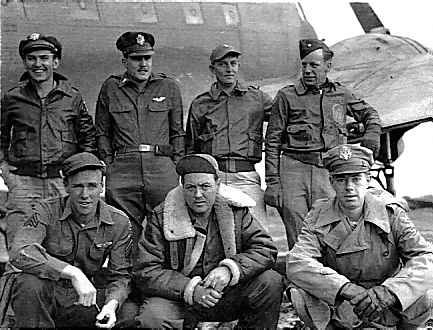|
|
|
It
was December ‘44 or January ‘45 and our Y Forces and the Chinese armies
had the Japanese bottled up in a land action but could not contain them.
The idea was to see to it that the Japanese were either captured or sustained
heavy losses as they evacuated along the Nam Kahm Highway.
The Fourteenth Air Force was called on to stop or harass the enemy but
the 69TH Wing, who’s mission it was, had a problem. The existing
maps were less than useless and neither bomber nor fighter outfits were
familiar with the terrain.
But the Twenty-Seventh Troop Carrier Squadron who had been flying out of
Yunnanyi to supply the Y Forces knew the area well. And so a mission was
scheduled to drop anti-personnel bombs from a Twenty-Seventh Troop Carrier
squadron C-47.
A colonel from the 69TH Composite Wing accompanied by an intelligence
officer flew to Yunnanyi to set up a night search and destroy mission.
Tech/Sergeant BURKS, Andrew, flight engineer with the Twenty-Seventh was
asked to do something with a C-47 so clusters of frag bombs could safely
be dropped.
Together with the armament officer of the Twenty-Fifth Fighter Squadron,
also stationed at Yunnanyi, I first removed the jump door so the bombs
could be pushed out.
The anti-personal bombs were loaded aboard. Each weighed 20 pounds. They
were wired 6 to a cluster. Nine clusters were carried. A length of rope
was attached to the arming wires and Burks figured that when a cluster
was pushed out the door they would drop just far enough before the rope
pulled up short, broke the wire holding the cluster together, and armed
the bombs. It was all pray and hope and keep your fingers crossed.
The historic C-47 bombing crew that flew the mission was Lieutenant SHARP,
Neil as pilot, Flight Officer HOLEWINSKI, “Tony” as co-pilot, Sergeant
BLAIR, Harry as radio operator and Sergeant BURKS, Andrew as flight engineer.
The crew was rounded out with Colonel RANCK, intelligence officers from
the 69TH Wing and an armament officer from the 25TH
Fighter Squadron.
After flying to the designated area, the plane dropped to about 2,000 feet
looking for the Japanese.
In ten to fifteen minutes, we spotted truck lights that appeared to be
moving on a road. We made a wide sweep to come up behind the convoy. In
the meantime, we had brought a cluster of bombs to the jump door and attached
the rope to the arming wire; we pushed the cluster a third of the way out
the door and waited. Our signal from Lieutenant SHARP was the jump bell.
The bell rang and we up-ended the cluster. I immediately dropped on my
stomach with my head partially out the door looking down. After several
seconds, which seemed like minutes, six well-scattered flashes appeared.
All lights on the road went out immediately.
On the next pass we pushed another cluster out and the rope broke. I thought
we had lost that cluster as they would not be armed, but behold, we got
one big boom and a flash. We made seven passes and then figured we had
better get out while we could. We arrived back in Yunnanyi a little before
daylight while the rest of the base seemed to be sleeping. This mission,
from all reports, was successful in helping to break up the convoy on this
road.
BURKS, Andrew
NOTE: Yours
truly (Harry Blair) flew the mission as Radio Operator.Due to radio silence
to and over the target I spent most of my time in the dome or standing
between the pilot and co-pilot. SHARP, Neil flew the aircraft over
the target by sticking his head out the window to his left. To say
he had a red face the next day would be the understatement of the century.
The Tower Radio Operators were completely baffled and confused with our
take off with no notice to operations or their nest. It was not until the
mission was complete that I broke Radio Silence and the base found out
what we were up to. Static was so bad that I had to use the trailing
antenna with code transmission and even then my complete transmissions
did not get through until we neared home field.
With my combat flying time accumulated I returned to the United States
shortly after the mission. However. BURKS, Andrew became a good friend
and we remain in touch via U.S. Mail and personal contact until his death
in 1999. At this writing SHARP, Neil and TURNER, Everett (69TH
Composite Wing) are still living and are also very close friends. We are
also often in touch.
Harry A. Blair

THE HAWKS
STANDING LEFT TO RIGHT
HOLEWINSKI, Anthony J~Co-Pilot SHARP, Neil D.~ Pilot
AUST, Harold J.~Armament Officer 25TH Fighter Squadron
RANCK, Nathan H.~Acting A-3, 69TH Composite Wing West Echelon
KNEELING LEFT TO RIGHT